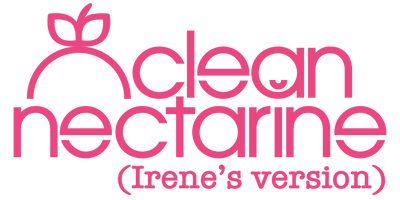If you've ever looked at the back of your arms and noticed small, rough bumps that feel like sandpaper or what some call "chicken skin," welcome to the club. You might have Keratosis Pilaris (KP). Don't worry, you're definitely not alone. This super common skin condition affects around 30 to 50% of us, especially women, and tends to get worse during those dry winter months. The good news? These pesky bumps are completely harmless, and there are plenty of natural ways to improve their appearance.
What Causes Keratosis Pilaris? The Science Explained
So what's actually going on with those tiny bumps? Research in the International Journal of Trichology explains that KP happens when excess keratin (a protein that protects our skin) builds up and creates plugs that block hair follicles. These little plugs trap the hair beneath the skin's surface, creating those telltale bumps.
From my deep dive into the research, there are several factors that might be behind this keratin buildup. For many of us, it's simply in our genes. Studies published in Cutis show that up to 50 to 70% of people with KP have family members with the same condition. This strong hereditary pattern suggests genetic predisposition plays a significant role in KP development, often associated with atopic dermatitis or dry skin conditions.
The environment plays a role too. Clinical research in Dermatologic Therapy has shown that KP typically worsens during winter due to decreased humidity and increased skin dryness. I don't know about you, but my KP gets a lot worse during winter when the air is dry and my skin is getting zero humidity. Now I know the science backs up what I've experienced firsthand.
Hormonal fluctuations can trigger KP flare-ups too. According to research in Dermascope, "Keratosis pilaris may occur when there is an excess of estrogen in ratio to progesterone." This hormonal connection explains why many of us notice KP changes during puberty, pregnancy, or throughout the monthly cycle.
There's also a possible connection between diet and KP that I've experienced personally. Dr. Amy Burkhart, MD, RD notes that some people see improvements when they eliminate inflammatory foods like gluten and dairy. I definitely noticed a difference when I cut back on gluten. Nutritional deficiencies, particularly in vitamins A and D, may also contribute to KP flare-ups. If you suspect your diet might be affecting your skin, it might be worth chatting with a nutritionist.
Bodycare Products for Managing the Cosmetic Appearance of Keratosis Pilaris
If you're anything like me, you've probably spent hours scrolling through beauty articles looking for the best products to tackle those KP bumps. I've tried what feels like hundreds of different lotions, scrubs, and treatments over the years.
The recommendations I keep seeing (and have found most helpful) include exfoliation with Alpha Hydroxy Acids (AHAs) like Glycolic and Lactic Acid at 5 to 10% concentration. These ingredients help loosen dead skin and break down excess keratin. I've found AHA liquid exfoliants work well when paired with physical scrubs, but not on the same day.
Rich hydrating moisturisers are also essential. Look for products with shea butter or cocoa butter, and apply right after showering while your skin is still warm. This locks in hydration and softens skin texture.
I've also had great results using natural oils on my KP. I rotate between organic coconut oil and sweet almond oil. They lock in moisture without clogging pores and help calm redness. You can apply them directly or mix them into your moisturiser for an extra hydration boost.
One thing that always comes up is consistency. As Marie Claire's Diandra Malivindi puts it, treating KP requires "committed maintenance" and typically takes 4 to 6 weeks of regular use to see visible improvement. I agree completely.
The Tried and Tested Natural Bodycare Products I Use
1. KORA Organics Turmeric Brightening and Exfoliating Mask
This mask combines Organic Turmeric, Rosehip Seeds, Green Tea Leaves, and Aspen Bark. It has Lactic Acid and natural AHAs from Papaya along with physical exfoliation. I apply it as a mask on my arms before a shower, then gently scrub once I’m in.
Shop the KORA Organics Turmeric Mask
2. Lumi Turkish Silk Exfoliating Mitt
This handcrafted mitt is made from pure Turkish Cocoon Silk. I use it once a week as part of my "Do Everything Shower." It smooths everything out.
Shop the Lumi Mitt
3. Weleda Skin Food Body Butter
This whipped formula is packed with Shea Butter, Rosemary, Chamomile, and Calendula. I apply it straight after showering for long-lasting hydration and zero greasiness.
Shop Weleda Skin Food Body Butter
4. Vanessa Megan AHA and Willow Bark Clarifying Serum
This is my night-time go-to. It combines Lactic, Glycolic, Citric, Malic, and Tartaric acids with Willow Bark and Witch Hazel. Powerful stuff. Avoid if your skin is super sensitive.
Shop Vanessa Megan Serum
5. The Waters Co Therapy Shower
This filter removes chlorine and adds Vitamin C and Collagen. My skin feels so much softer after installing it.
Shop the Therapy Shower
Have you found anything that works wonders for KP? I’d love to know what’s worked for you!
Common Questions About Keratosis Pilaris
What is Keratosis Pilaris?
Keratosis Pilaris (KP) is a common skin condition with small, rough bumps on areas like the upper arms or thighs. It’s caused by keratin blocking the hair follicles.
What causes Keratosis Pilaris?
KP can be genetic, seasonal, or linked to hormonal and dietary factors. Cold, dry weather and low humidity tend to make it worse.
How can I manage KP naturally?
Use gentle exfoliants like Glycolic and Lactic Acid, follow up with rich moisturisers, apply nourishing oils, and consider using a chlorine-removing shower filter. Consistency is key.



Leave a comment